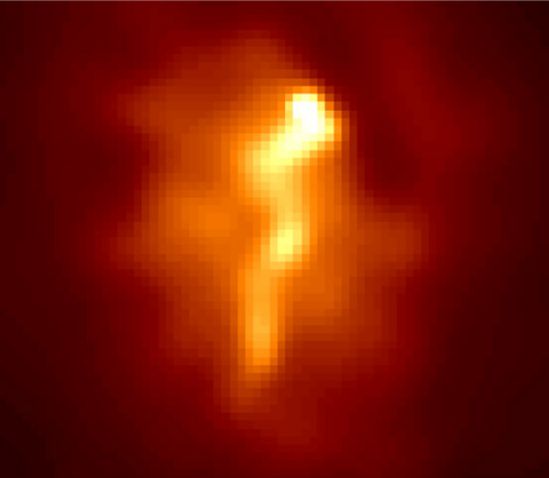
|
Credit & Copyright: A. Fabian
(IoA Cambridge) et al.,
NASA
Explanation:
Throughout the Universe, galaxies
tend to swarm in groups
ranging from just a handful of members to casts of thousands.
Astronomers have realized since the early 1970s that
the larger swarms, immense
clusters of galaxies millions of
light-years across, are immersed
within tenuous clouds of hot gas which glow strongly in x-rays.
These clouds may have been heated by their collapse
in the early Universe, but in many
galaxy clusters,
the gas appears to be cooling.
This Chandra Observatory
x-ray image reveals a striking
cooling flow
in the central regions of the
galaxy
cluster
cataloged
as Abell 1795.
Brighter pixels in the false-color image represent higher x-ray
intensities.
The bright filament down the center indicates gas condensing and
cooling -- rapidly
loosing energy by radiating x-rays.
At the very top of the filament is a
large, x-ray bright galaxy.
As it moved through the
cluster gas cloud, the massive galaxy's gravitational
influence seems to have created this cosmic wake of denser,
cooling gas.
Continuing to cool, the cluster gas will ultimately
provide raw material to form future generations of stars.
|
January February March April May June July August September October November December |
| ||||||||||||||||||||||||||||||||||||||||||||||||
NASA Web Site Statements, Warnings, and Disclaimers
NASA Official: Jay Norris. Specific rights apply.
A service of: LHEA at NASA / GSFC
& Michigan Tech. U.
Based on Astronomy Picture
Of the Day
Publications with keywords: cluster - galaxy cluster - intracluster gas - abell 1795
Publications with words: cluster - galaxy cluster - intracluster gas - abell 1795
See also:
